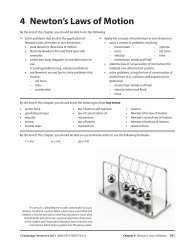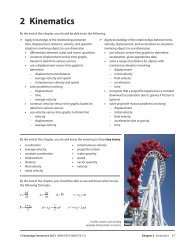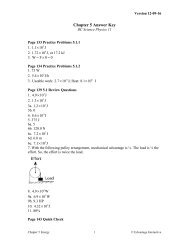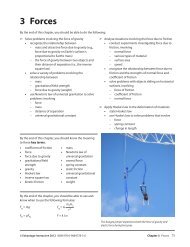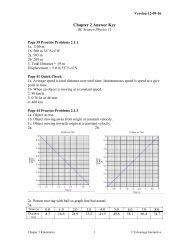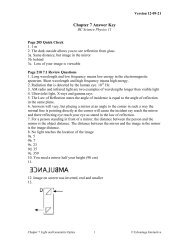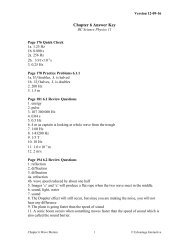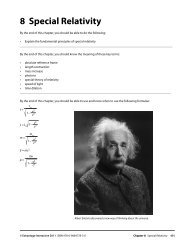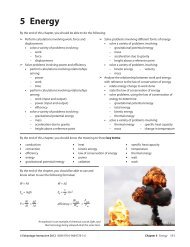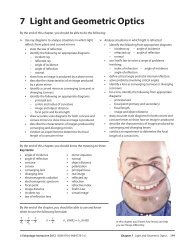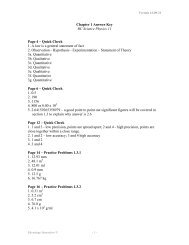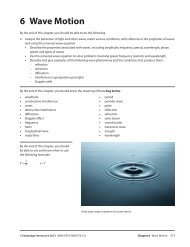Draft BCPhysics11-4 Edvantage Interactive.pdf - BC Science ...
Draft BCPhysics11-4 Edvantage Interactive.pdf - BC Science ...
Draft BCPhysics11-4 Edvantage Interactive.pdf - BC Science ...
You also want an ePaper? Increase the reach of your titles
YUMPU automatically turns print PDFs into web optimized ePapers that Google loves.
9. Two tug-of-war teams are at opposite ends of a<br />
rope. Newton’s third law says that the force exerted<br />
by team A will equal the force that team B exerts on<br />
team A. How can either team win the tug-of-war?<br />
10. (a) Define momentum.<br />
(b) Why is momentum considered a very important<br />
quantity in physics?<br />
11. (a) Define impulse.<br />
(b) What is the impulse due to a force that causes<br />
the velocity of a 46 g golf ball to change from<br />
0 m/s to 60.0 m/s in 0.50 ms?<br />
(c) What force was applied to the ball?<br />
12. A hunter who fails to hold the rifle firmly against a<br />
shoulder may be injured when shooting. Explain in<br />
terms of Newton’s third law.<br />
13. A 4.2 kg rifle shoots a 0.050 kg bullet at a velocity of<br />
3.00 × 10 2 m/s. At what velocity does the rifle recoil?<br />
14. A 0.250 kg ball of Plasticine moving at 5.0 m/s<br />
overtakes and collides with a 0.300 kg ball of<br />
Plasticine, travelling in the same direction at 2.0 m/s.<br />
The two balls of Plasticine stick together on collision.<br />
What is their velocity after the collision?<br />
15. A railroad car of mass 12 000 kg is travelling at a<br />
velocity of 6.0 m/s when it collides with an identical<br />
car at rest. The two cars lock together. What is their<br />
common velocity after the collision?<br />
188 Chapter 4 Newton’s Laws of Motion — DRAFT © <strong>Edvantage</strong> <strong>Interactive</strong> 2011 ISBN 978-0-9864778-3-6



